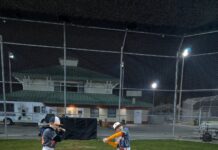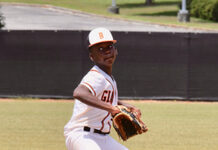If you are a youth baseball parent and want to add new baseball drills in order to give your child more variety, then consider taking your child to a professional baseball tryout. Professional tryouts, especially open tryouts hosted by Major League and independent minor league teams, offer the average youth baseball parent a new perspective on how professional baseball really works. Your child will be exposed to the actual process of how scouts and general managers evaluate talent, and you may even get the opportunity to have your child meet actual professional baseball decision makers.
Many open professional tryouts attempt to determine the physical talents of the aspiring players. Scouts look for speed, arm strength, glove skills, and then they will look for hitting skills and mechanics. These tryouts are not like reality TV shows where the judges are nice and give positive feedback all the time. Instead the scouts simply call out those that they like and the rest of the players go home, many to officially end their dreams of playing professional baseball. While this may not be the dream you have for your child, consider taking your child to the tryout because it can offer your child a very real lesson: that baseball is meant to be enjoyed all the time because at some point one may have to stop playing entirely.
Here are some drills you will see used in a professional tryout, and you may wish to incorporate some of them into your own child’s skill development:
• The 60-yard dash is used to determine sheer sprint speed, and it is chosen to determine the athlete’s ability to run from the length of two bases. If you decide to incorporate this for your child, do so sparingly and make sure that your child is warmed up. Also reduce the length from 60 yards to only twice the distance from home to first. Of course, make sure that your child is medically approved to do sprinting. Keep the number of such dashes very low and GRADUALLY build up over time.
• Infielders have to go to the corners and throw across the field from the edge of the outfield grass. For example, first baseman go to the edge of the outfield behind first base, and then they have to throw across the field to third base. All other infielders go to the edge of the outfield grass behind third base and throw to first base.
• Catchers are tested on pop-ups behind home plate and their throwing times from home plate to second base. This tests the catcher’s “pop-time” in throwing out runners stealing second base. If your child is playing in a league where stealing bases is not allowed then introduce this technique gradually, and only when nearing the levels where stealing bases is permitted.
• All outfielders go to right field and are hit fly balls. They then catch the ball and throw to third base. Scouts look at arm strength, how straight the ball is being thrown, and accuracy. If you decide to introduce this skill to your child’s practice then make sure that he is warmed up and limit the number of throws in order to save his arm.
• Pitchers are asked to throw an assortment of pitches in the bullpen. Of course, your child must be medically approved to pitch, especially if you think your child is ready for curveballs and other off-speed pitches. If your child is not old enough or not medically approved to throw off-speed pitches, then work on location. Velocity will come with age, so get proper pitching instruction for your child in order to protect his arm. READ MORE
















